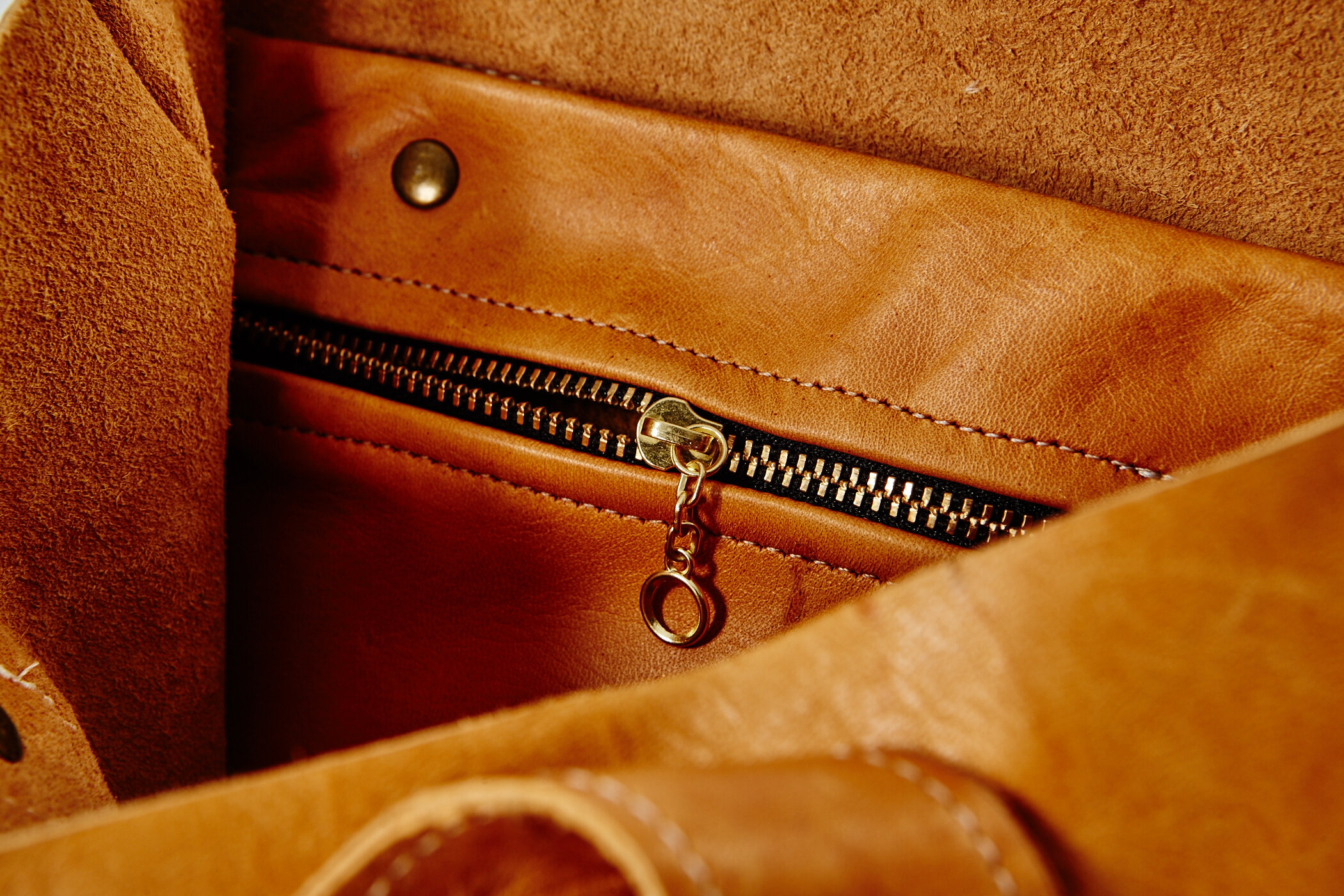
Most leather on the market today is tanned using chromium, a fast and low-cost process that produces colorfast hides of uniform color. In contrast, vegetable tanning is a traditional, slow, and non-toxic process using organic plant matter to cure and preserve the hide. It produces hides with rich, warm, and uniquely variegated tones. However, unlike modern chromium tanned hides, vegetable tanned leather wears well, molding to its owner’s habits, much like raw denim. Vegetable tanned leather darkens and develops a patina over time with exposure to natural elements. For example, when exposed to water, the leather may form a dappled appearance that remains after the leather dries. When exposed to the sun, lighter leathers will also darken over time. Vegetable tanned leather also absorbs oils. In our opinion, these qualities are not defects but rather reflective of the individual character and history of a piece that emerges over time.
If light cleaning is necessary, we recommend cleaning the piece with a clean, damp cloth. Saddle soap can be used if necessary, but rub lightly and carefully when cleaning the printed leather so as not to damage the print. If a deeper cleaning is needed, the solid-colored leather products can be dry cleaned by a professional leather specialist. The hand-screen printed leather, however, will not stand up to the solvents used in the dry cleaning process and must be hand cleaned by a leather professional. We recommend using an expert such as Without a Trace (they accept items to be cleaned by mail).
Since the leathers that Production Mode uses are heavily conditioned with fats and oils during the tanning process, your leather product should not need to be oiled or conditioned for a long while, unless exposed to harsh elements. Always test the conditioner on an inconspicuous area before applying.
Please note that vegetable tanned leathers are not entirely colorfast. The dyes and oils used to condition the leathers can bleed onto lighter colored fabrics, especially if the leather becomes wet. In addition, as with any screen print that sits on top of a surface, the print on the leather may scratch, crack, or peel over time, especially if abraded or exposed to the elements.
When storing vegetable tanned leathers, do not use plastic garment bags as they do not allow the leather to breath. Also avoid folding the leather back on itself as permanent creases may form and the printed leathers may crack or stick if exposed to extreme heat or temperature change.
Explore the Leather Collection








